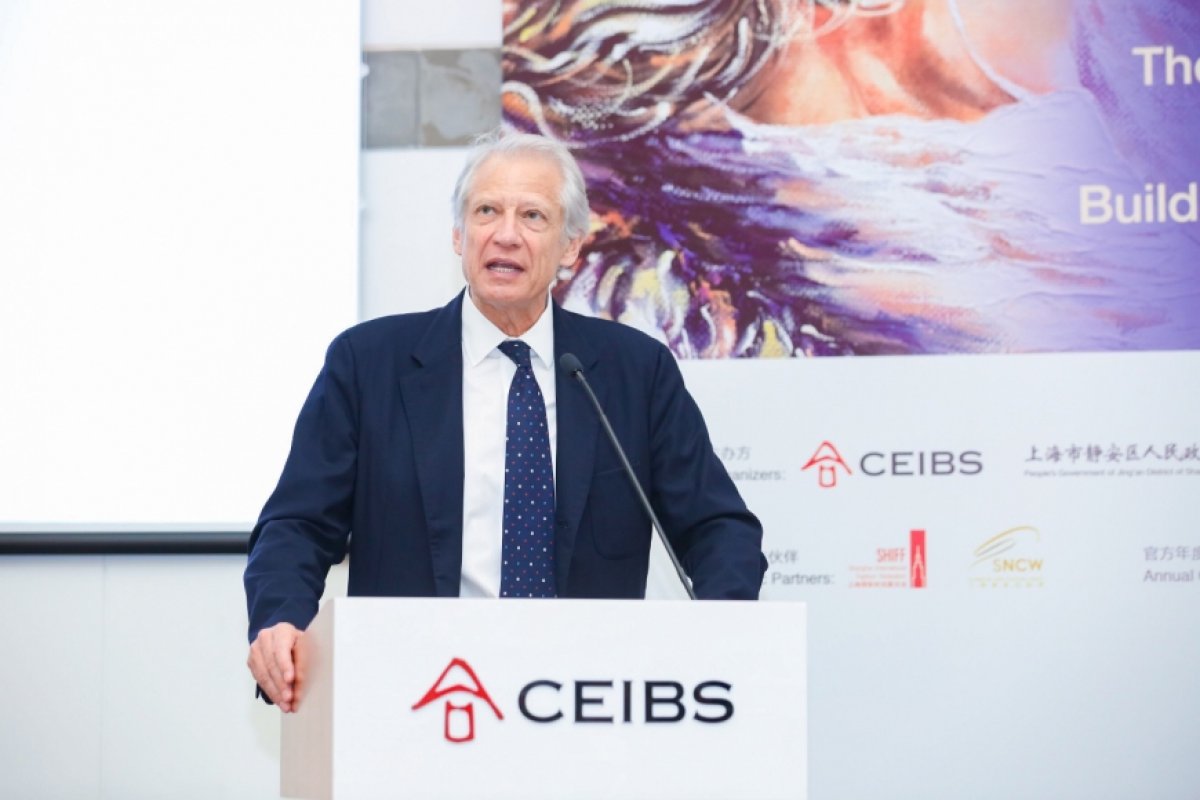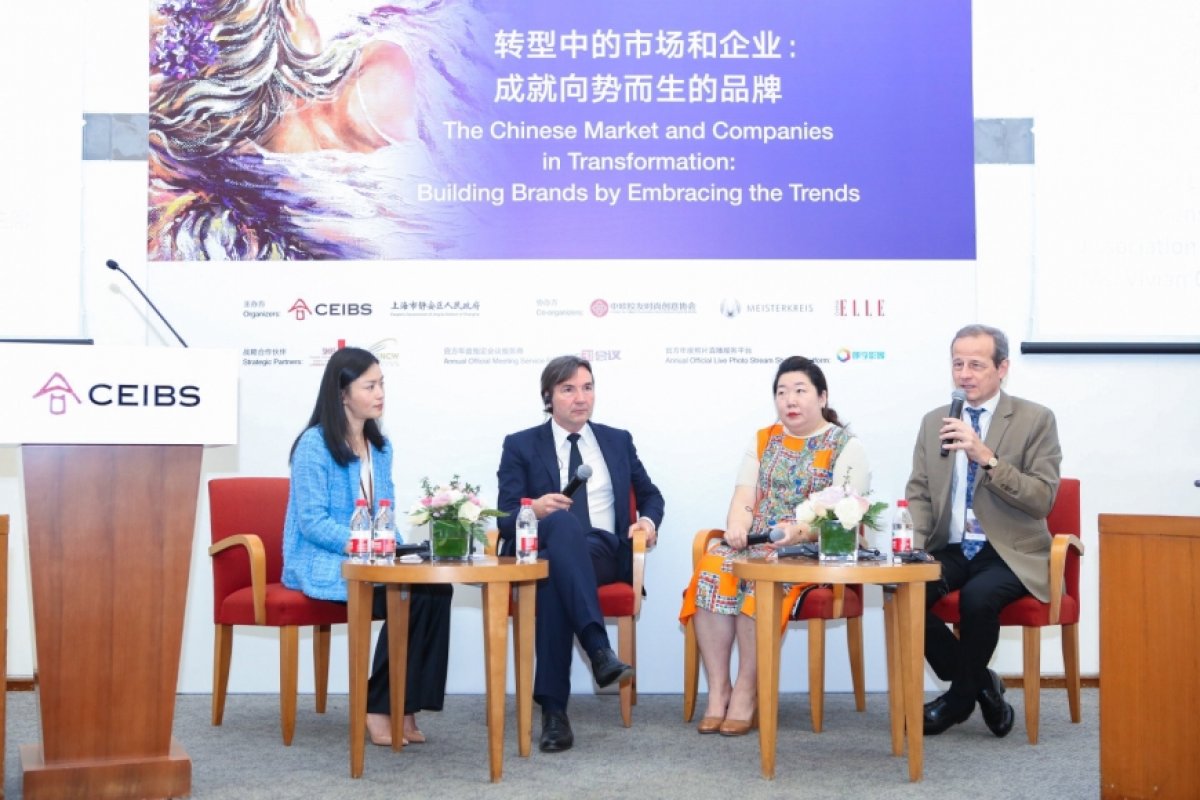Building Brands by Embracing the Trends
Co-organized by CEIBS and Shanghai Jing’an District Government, 11th Prestige Brands Forum 2019 was hosted on CEIBS Shanghai Campus on May 24. Under the theme of “The Chinese Market and Companies in Transformation: Building Brands by Embracing the Trends”, CEIBS professors, representatives of fashion brands, and scholars engaged in discussions on the new trends for the consumer behavior, new era for bricks-and-mortar business, and new marketing models in the digital age. The Forum was moderated by Jane Wang, Associate Professor of Marketing, CEIBS and Director, CEIBS-Jing’an International Fashion Industry Research Center.
Presently, Chinese companies are facing intense pressure of transformation and upgrading to put in a strong showing in the global arena. To this end, they need to shift their focus to innovation and entrepreneurship, instead of being merely low-value-added and efficiency-driven. As the rules of the game are being disrupted and the brand market is being reconstructed, an array of intelligent technologies will play an increasingly instrumental role in brand marketing. Therefore, the timing cannot be better for this forum.
Dr. Snow Zhou, CEIBS Assistant President and Zhou Haiying, Member of the Standing Committee of CPC Shanghai Jing’an District Committee and Deputy Mayor of Jing’an District, delivered a welcome address in succession. Dr. Snow Zhou noted that in the context of new consumption and retail, the balance of power in China’s consumer market was tipping in favor of emerging brands that embraced digital technologies, including the Internet, artificial intelligence and blockchain. To ride on the new wave of consumption, both Chinese and overseas brands would need to figure out how to capture consumer trends in the era of disruption. Deputy Mayor Zhou pointed out that the complicated and changing international political and economic landscape was adding uncertainty to global economic development. He added that this forum is particularly significant in focusing on the new trend for Chinese brands and the paths to corporate change and innovation.
Megatrend for the Chinese Market and the Paths to Corporate Change and Innovation
In his keynote speech, Dominique De Villepin, Distinguished Professor of CEIBS, Chairman of CEIBS International Advisory Board (IAB), and former Prime Minister of France, shared his insights into the megatrends and driving force for the Chinese market and Chinese companies’ new paths to change and innovation.
He argued that China’s economy had shifted from a low value-added, export-oriented model to a more dynamic pattern driven by innovation and domestic demand. The transformation would make China’s economy more stable and sustainable in the long run. During the transformation, enterprises would face many opportunities and challenges.
He noted that the reform and opening-up, and globalization had been transforming corporate structure and decision-making. Chinese enterprises not only needed to lay out a new vision and new structures to effectively manage their subsidiaries abroad, but also needed to develop in-house capacities to keep up with international trends. Besides, China’s technological and cultural transition has opened a new territory of economic growth. Some prominent high-tech companies have stood out, bringing people more convenience in terms of mobility, communication and knowledge acquisition. Technological innovation was driving social progress and improving people’s quality of life. In this context, Chinese consumers would have rising demands and expectations for companies.
He believed it’s time to build a new economy focused on high quality and mutual benefit. This meant supporting prestige brands and high-quality products. He said, “As consumers used to take price as the major decision variable, companies could compete on low prices. Nowadays, quality and service are crucial to building consumer trust.” He suggested Chinese companies continuously strengthen customer loyalty by forging long-term ties with customers so as to build enduring brands.
Market Restructuring and Value Connection
Bruno Lannes, Partner of Bain & Company (Greater China), believed that China’s consumer market was experiencing changes in four areas. First, a growing number of consumers choosed to spend at home rather than abroad; second, the growth in the consumer market was driven by an expanding middle class with strong spending power; third, as one of the major customer groups, millennials have unique consumer behaviors and an inclination toward instant consumption, valuing product quality over price; fourth, interaction between consumers and brands was fulfilled no longer through traditional channels, but through digital platforms. He pointed out that as consumers were placing a premium on personalization and customization, companies should actively respond to their increasingly fragmented needs through consumer-centric models and provide them with better experience and services.
Ms. Cai Hua (CEIBS EMBA2016), Co-Founder and CMO of Ymatou.com, said that millennials (born between 1984 and 2000), who have been long exposed to the Internet, were more inclined to obtain information about luxury goods online and willing to pay a premium for personalized products and services. In the era of consumption upgrade, enterprises would see plenty of business opportunities. Live-streaming e-commerce has redefined the relationship among consumers, commodities and scenarios, and strengthened consumers’ trust in products and brands, upending the traditional e-commerce experience. In this sense, the live-streaming e-commerce market held a USD100 billion potential.
Clemens Pflanz, Founder and Chairman of MEISTERKREIS, a Germany-based luxury goods association, put forward three suggestions about Chinese companies’ brand transformation. First, quality lay at the heart of a product. During the brand transformation, high-quality products could ensure not only stability of the brand, but also its sustainable development after the transformation. Second, in the digital age, brands needed new partnerships that would give an impetus to innovation and transformation. Third, sustainable development should be given a top priority in brand transformation and building. Chinese companies would need to gear product and technological innovation toward ever-changing consumer attitudes and behaviors so that their brands could withstand the test of the time and maintain their luster.
Bruno Lannes, Cai Hua and Clemens Pflanz held a roundtable discussion moderated by Prof. Jane Wang.
Corporate Transformation: Paths and Strategies
What opportunities will digital technology open up to companies? Dr. Liu Yuliang (CEIBS EMBA1999), Chairman, China Association of Fragrance Flavor and Society of Cosmetic Science and Technology, cited the digital landscape of Chinese cosmetics companies as an example of how digital upgrading could deliver a boost to brand development. He noted that at the corporate level, the level of digitalization was highly correlated with revenue growth and profitability. The impact of information technology on traditional companies was gradually going beyond communication channels to penetrate into the supply chain and even the entire value chain. Companies should provide precise services for consumers through digitization of supply chain based on the big data platform, and boost brand development through digital integration of internal and external data for more efficient operations in terms of consumers, commodities and scenarios based on the big data platform.
Ms. Jessie Yang, Senior Vice President, InMobi Global and General Manager, InMobi Greater China, also cited the application of AI technology as an example of how AI could help companies with brands’ mobile marketing. She explained that AI video advertising based on big data could cover all scenarios, including fragmented time. It could promptly capture changes in user scenarios to “find the right person” and “reach the right person” so as to ensure targeted advertising. She emphasized in the era of mobile Internet, companies must make good use of digital and algorithm technology to provide efficient solutions to brand marketing.
Cai Chongda, CEO of MAGMODE, shared his views about changes in bricks-and-mortar businesses. He believed what had changed was all on the surface, while what stayed unchanged was at the core. Bricks-and-mortar businesses screen commodities by product attribute, frequency of product update, and suitability, with the advantage of trading physical space for customer experience. For example, shopping centers attract consumers with exquisite windows. The low frequency of product update, however, is an unavoidable soft spot for bricks-and-mortar businesses. Nevertheless, Mr. Cai emphasized that bricks-and-mortar businesses would probably see a new sales boom as long as they could provide commodities that catered to consumers’ demand for personalization and diversification.
Finally, Liu Yuliang, Jessie Yang, Cai Chongda and Wang Xiaoyi, Director of Tmall Luxury Marketing Center, held a roundtable discussion moderated by Ms. Irene Tang (CEIBS EMBA2011), Founder & CEO, Fulishe and Secretary-General, CEIBS Fashion & Creativity Alumni Association.




















